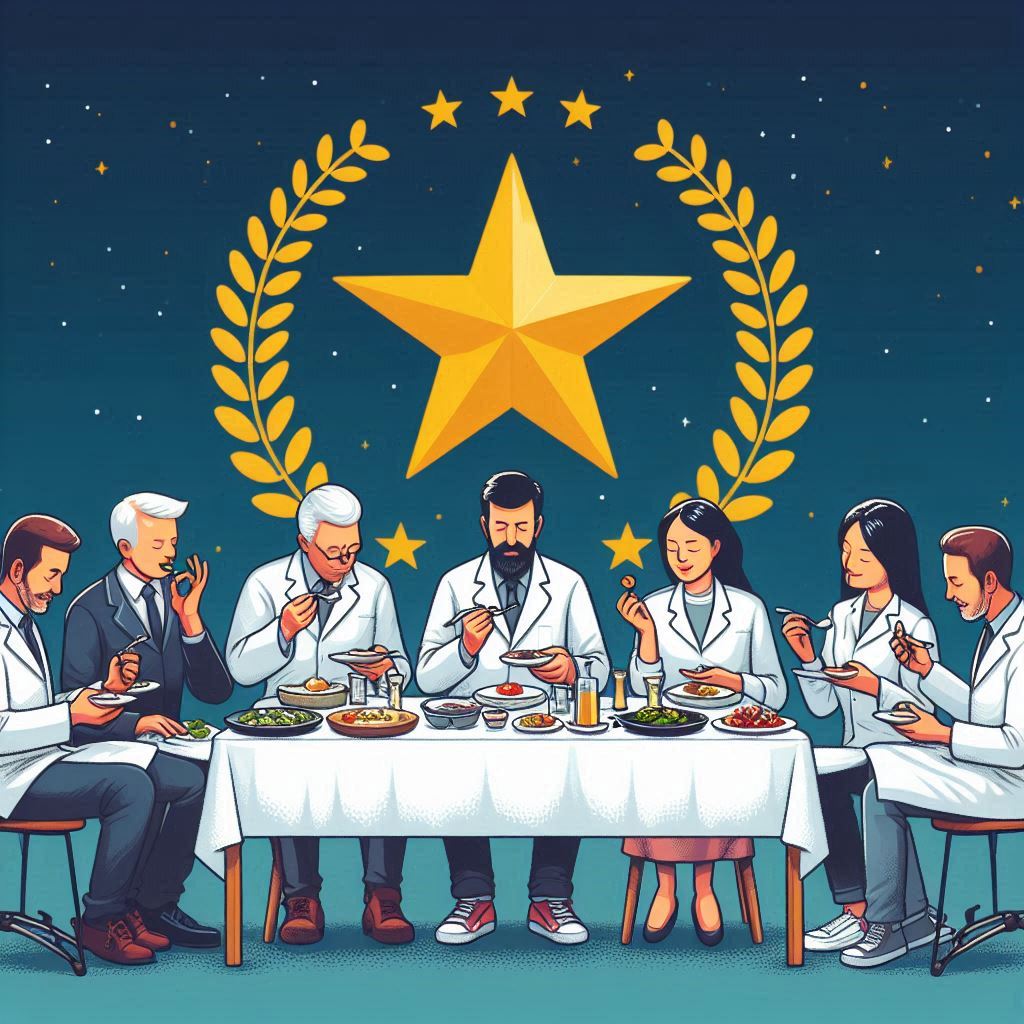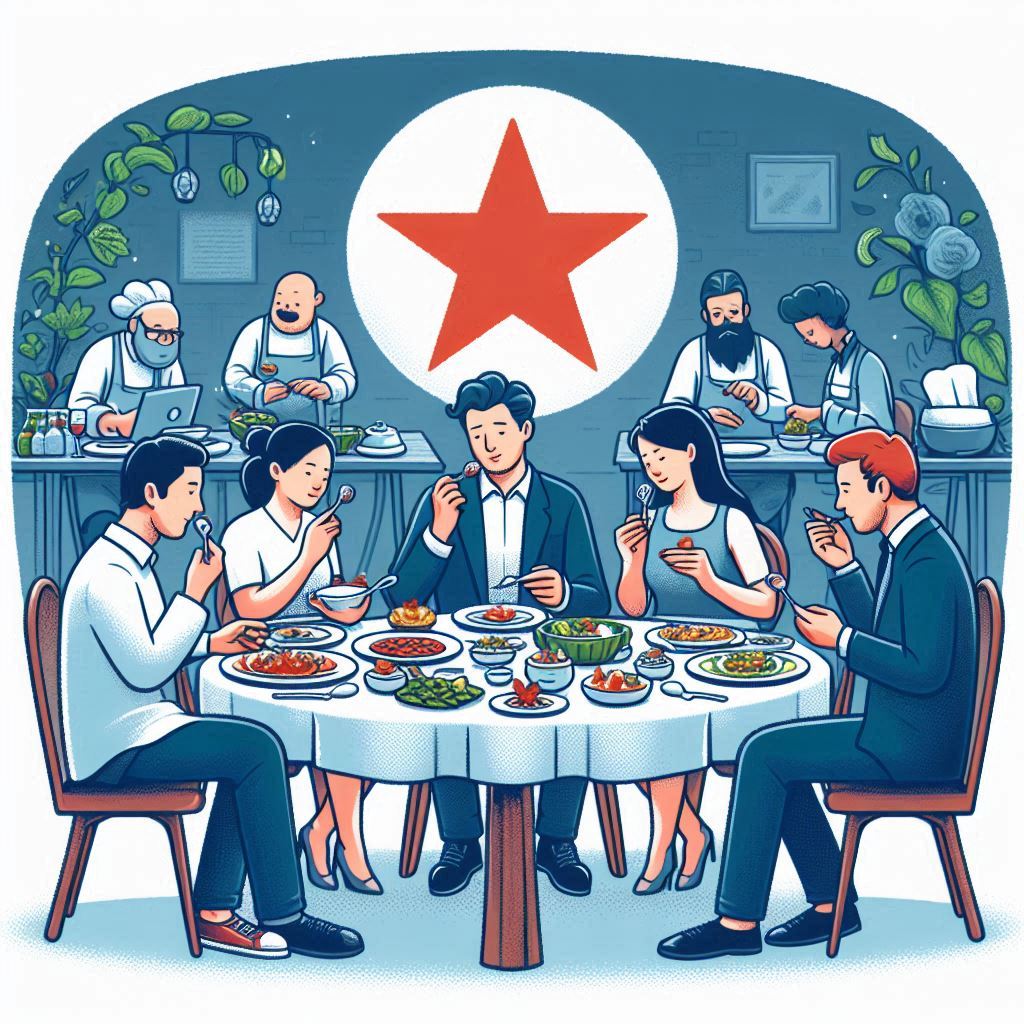米其林指南的歷史與評鑑
米其林公司(Michelin)成立於1889年5月28日,創始人是兄弟愛德華·米其林(Édouard Michelin)和安德烈·米其林(André Michelin)。總部位於法國克萊蒙費朗的企業以輪胎生產起家,如今已成為全球輪胎行業的領導者之一。除了輪胎業務,米其林指南(Michelin Guide)也享有盛譽,是全球餐飲和酒店評鑑的權威之一。
米其林指南最初於1900年出版,目的是促進汽車旅行並增加輪胎需求。第一版指南主要提供地圖、汽車修理廠、旅館及加油站的資訊。直到1926年,指南才開始對餐廳進行評星,逐漸演變成今天的餐飲界標杆。評鑑過程極為嚴謹和保密,確保其公正性和權威性。以下是米其林評鑑系統的詳細運作方式:
匿名評鑑員: 雇用專業的餐廳評鑑員,他們通常擁有豐富的餐飲經驗和背景。這些評鑑員以普通顧客的身份匿名訪問餐廳,確保他們所獲得的體驗與普通顧客無異。為了獲得全面且公正的評價,評鑑員會多次訪問同一家餐廳。他們會在不同的時間和季節進行評鑑,以確保餐廳能夠始終如一地提供高品質的餐飲服務。
評鑑員根據五個主要標準對餐廳進行評價:
食材品質:評估所用食材的新鮮度和質量。
烹飪技巧:評價廚師的烹飪水平和技術表現。
風味融合:考察菜餚的味道、風味的平衡和搭配。
廚師風格:關注廚師的創意和個性化風格表現。
性價比:考慮餐廳的價格與所提供食物和服務的價值。
穩定性:評估餐廳在不同時間段內的一致性和穩定性。
集體討論: 評鑑員的評價報告將提交給米其林的審查委員會。委員會由高級評鑑員組成,他們會集體討論每家餐廳的表現,並最終決定是否授予星級評價。
米其林指南的評價系統分為三個主要星級:
一星(*):代表“高品質的烹飪,值得停下來一嘗”。這些餐廳在食材品質和烹飪技巧方面表現優異。
二星(**):代表“出色的烹飪,值得繞道前往”。這些餐廳在味道融合和廚師風格方面尤為突出。
三星(***):代表“卓越的烹飪,值得專程造訪”。這是最高榮譽,僅授予那些在所有評鑑標準上都達到極高水平的餐廳。
此外,米其林指南還設有“必比登推介”(Bib Gourmand)稱號,表彰那些提供高品質且價格合理的餐廳。這些餐廳雖未達到星級標準,但仍具備卓越的烹飪水平和優良的性價比。
米其林指南對全球餐飲業具有巨大影響力。獲得米其林星級評價被視為餐廳和廚師的最高榮譽,能顯著提升餐廳的知名度和吸引力。然而,評鑑系統也面臨一些批評和挑戰。
部分批評者認為,米其林指南過於偏重傳統法國高端餐飲,對其他飲食文化和創新餐廳的評價不夠公平。此外,某些地區和小城市的餐廳較難引起評鑑員的注意,這導致指南在地域覆蓋上存在局限性。
總結來說,米其林公司及其餐廳評鑑系統在餐飲界擁有無可爭議的權威地位。通過嚴格的評鑑流程和高標準的評價體系,成功地樹立全球餐飲品質的標杆,並持續推動餐飲業的創新和發展。
Michelin was founded on May 28, 1889, by brothers Édouard Michelin and André Michelin. Headquartered in Clermont-Ferrand, France, the company started as a tire manufacturer and has since become one of the global leaders in the tire industry. In addition to its tire business, the Michelin Guide is also highly renowned and serves as one of the most authoritative sources for rating restaurants and hotels worldwide.
The Michelin Guide was first published in 1900 with the goal of promoting automobile travel and increasing demand for tires. The first edition primarily provided information on maps, car repair shops, hotels, and gas stations. It wasn’t until 1926 that the guide began awarding stars to restaurants, gradually evolving into the culinary benchmark it is today.
The process of rating restaurants is extremely rigorous and confidential, ensuring the fairness and authority of the evaluations. Here is a detailed look at how the Michelin rating system operates:
Michelin hires professional restaurant inspectors who typically have extensive experience and backgrounds in the culinary industry. These inspectors visit restaurants anonymously as regular customers, ensuring that the experience they receive is the same as that of any ordinary diner. To provide a comprehensive and impartial assessment, the inspectors visit each restaurant multiple times. They conduct these inspections at different times and seasons to ensure that the restaurant consistently delivers high-quality dining experiences.
Inspectors evaluate restaurants based on five main criteria:
Quality of ingredients: The freshness and quality of the ingredients used are assessed.
Cooking techniques: The level of the chef’s skills and technical execution is evaluated.
Flavor harmony: The taste, balance, and combination of flavors in the dishes are examined.
Chef’s creativity: Attention is paid to the chef’s creativity and personal style.
Value for money: The relationship between the restaurant’s prices and the quality of the food and service provided is considered.
Consistency: The restaurant’s performance across different visits is evaluated for consistency.
The inspectors’ reports are then submitted to Michelin’s review committee. This committee, composed of senior inspectors, collectively discusses the performance of each restaurant and makes the final decision on whether to award a star.
The Michelin Guide’s rating system is divided into three main star levels:
One star (*): Represents “high-quality cooking, worth a stop.” These restaurants excel in ingredient quality and cooking techniques.
Two stars ():** Represents “excellent cooking, worth a detour.” These restaurants particularly stand out in terms of flavor harmony and chef’s style.
Three stars (*):** Represents “exceptional cuisine, worth a special journey.” This is the highest honor, awarded only to those restaurants that excel across all rating criteria.
Additionally, the Michelin Guide includes the "Bib Gourmand" designation, which highlights restaurants that offer high-quality food at reasonable prices. Although these restaurants do not meet the star criteria, they still exhibit exceptional culinary standards and great value for money.
The Michelin Guide has a profound impact on the global culinary industry. Receiving a Michelin star is considered the highest honor for restaurants and chefs, significantly boosting their reputation and appeal. However, the system has faced some criticism and challenges.
Some critics argue that the Michelin Guide is overly focused on traditional French haute cuisine and does not adequately recognize other culinary cultures or innovative restaurants. Additionally, restaurants in certain regions or smaller cities often struggle to attract the attention of Michelin inspectors, leading to a perceived limitation in the guide’s geographic coverage.
In summary, Michelin and its restaurant rating system hold an undisputed position of authority in the culinary world. Through its rigorous evaluation process and high standards, Michelin has successfully established a global benchmark for dining quality, continually driving innovation and progress in the restaurant industry.


照片:DALLE3
- 1
- 2
- 3
- 4
